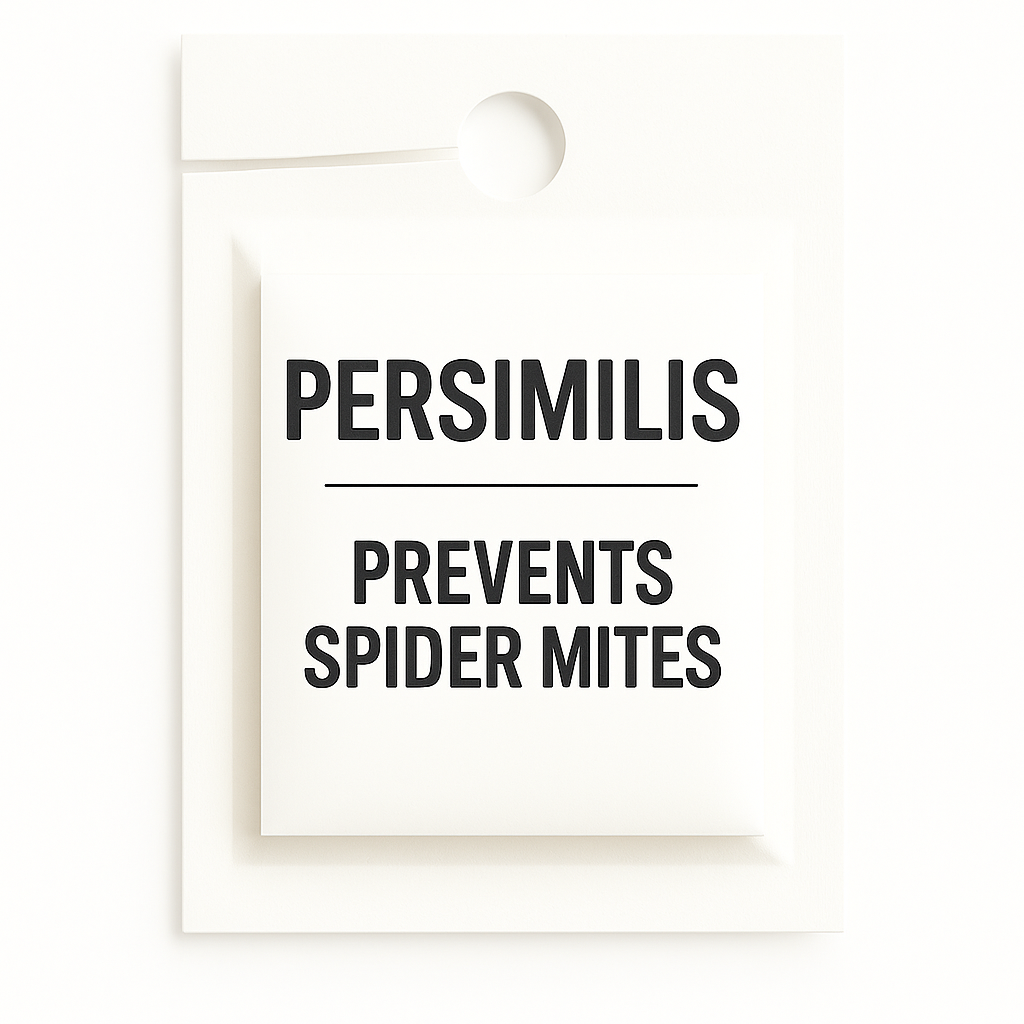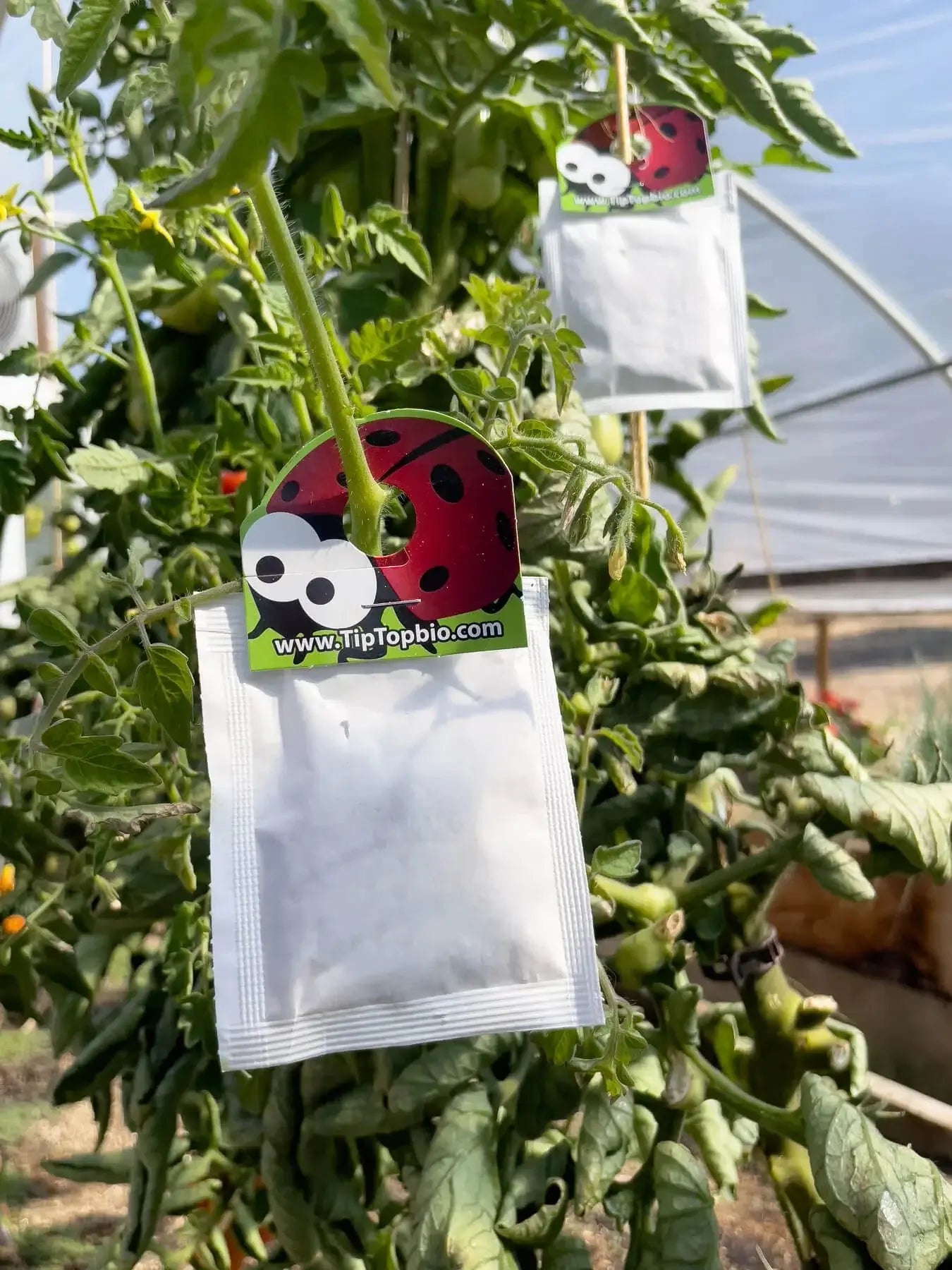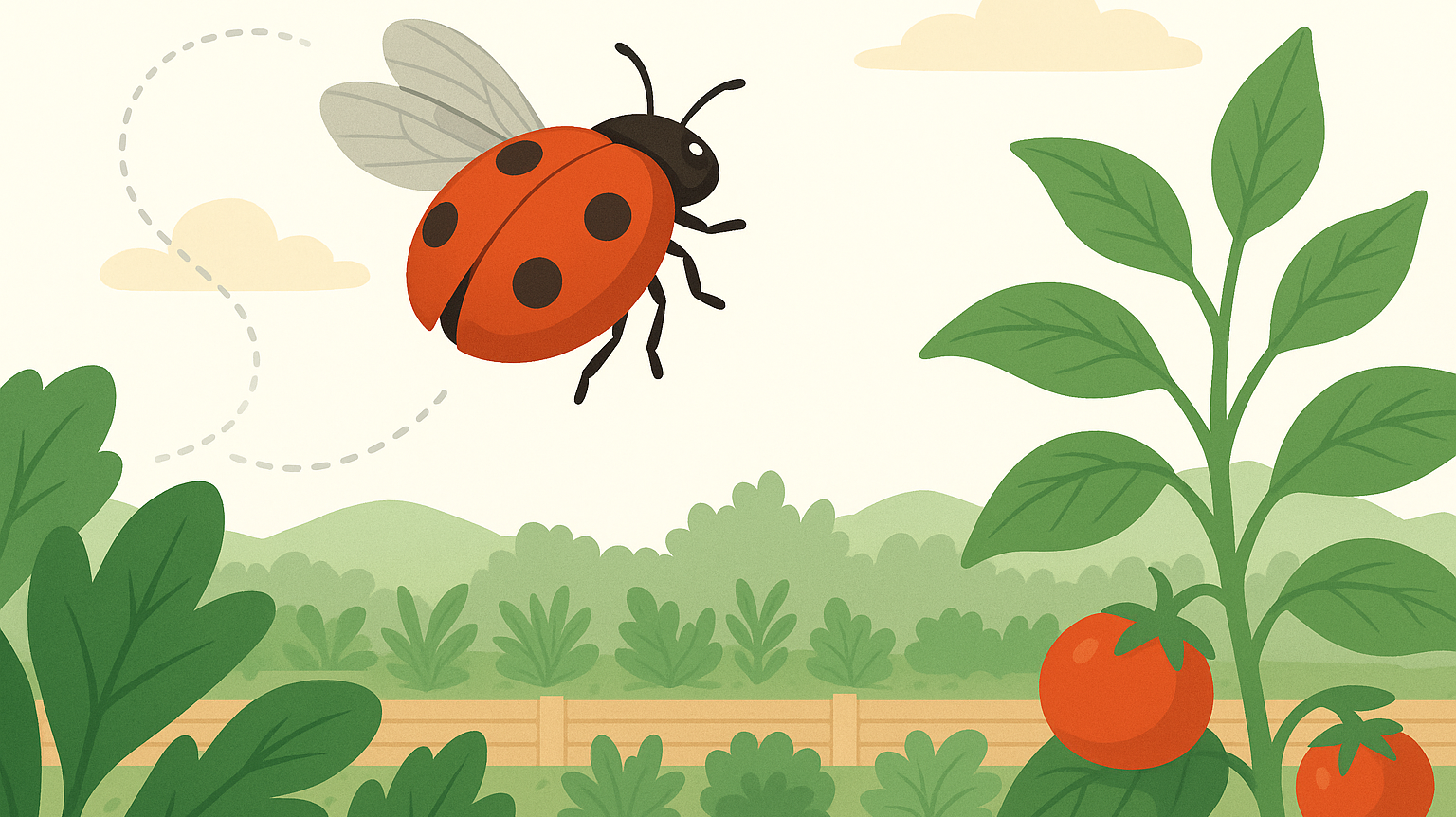Want to Prevent a Spider Mite Outbreak? Start Here.
Spider mites don’t announce themselves. By the time you see webbing or speckled leaves, they’ve already done the damage.
Phytoseiulus persimilis sachets help stop the outbreak before it starts.
Phytoseiulus persimilis Sachets
Targeted Prevention for Spider Mites (Tetranychus spp.)
These slow-release sachets contain all life stages of P. persimilis, a specialist predator that only feeds on spider mites—no detours, no distractions.
Each sachet delivers a controlled release of eggs, juveniles, and adults over 2–4 weeks, building a rolling presence of predators right where you need them.
If your environment is warm and humid—and your pest risk is seasonal or recurring—this is how you stay ahead of spider mites.
Use These to Prevent:
| Pest | Targeted Species |
|---|---|
| Two-Spotted Spider Mites (Tetranychus urticae) | Primary target |
| Carmine Red Mites | Effective at all life stages |
| Pacific Spider Mites | Suppression before webbing |
| Other web-spinning Tetranychus species | As long as they spin webs, these mites are on the menu |
P. persimilis doesn’t go after anything else—it’s spider mites or nothing.
When to Choose P. persimilis Sachets
| Use When... | Don't Use When... |
|---|---|
| You’re dealing only with spider mites | You also have thrips, broad mites, or russet mites |
| Your environment stays warm + humid (68–90°F, 60–90% RH) | You’re growing in cool, dry, or fluctuating conditions |
| You’re rotating between bottles and sachets | You need generalist coverage—use Swirskii or Andersoni instead |
These sachets are for growers who know spider mites are the main threat—and want the right predator on standby before they show up.
Why Use Sachets?
| Feature | Benefit |
|---|---|
| Gradual release | Sustained control over 2–4 weeks |
| No application mess | No sprinkling, no cleanup |
| Multi-stage coverage | Contains eggs, juveniles, and adults |
| Precision targeting | Only attacks spider mites—won’t waste energy on other prey |
| "Set it and forget it" ease | Hang and let them deploy naturally |
Think of this as built-in insurance for high-value plants in spider mite–prone zones.
Best For
-
Spider mite–prone crops in greenhouses and grow tents
-
High-value ornamentals or tropicals under lights
-
Seasonal spider mite prevention (spring/fall cycles)
-
Warm, humid propagation rooms and nursery setups
-
Rotating IPM strategies alongside bottles and other predators
How to Use
| Situation | Application Rate |
|---|---|
| General prevention | 1 sachet every 3–6 feet |
| High-risk plants or hot spots | 1 sachet per plant |
| During active season | Refresh every 2–4 weeks |
-
Hang sachets near the canopy, not in the soil
-
Keep them dry—avoid direct misting or soaking
-
Replace regularly to maintain population density
Safe for Everything but the Pests
-
Non-toxic
-
Safe for humans, pets, and pollinators
-
No re-entry interval
-
Won’t harm foliage or soil
-
IPM- and organic-compatible
Phytoseiulus persimilis are strict specialists—they only target spider mites. Nothing else.
Shipping & Storage
-
Ships 2-Day with live arrival guarantee
-
Hang immediately upon arrival for best performance
-
If delayed, store at 45–55°F for up to 24 hours
-
Do not freeze or store near dry air sources (like food fridges)
FAQ
How does the Live Guarantee work?
We know how important it is for your mites to arrive healthy and ready to work. That’s why we offer a live arrival guarantee—with flexible options depending on when we hear from you:
- Let us know within 24 hours of delivery: We’ll gladly send a free replacement shipment.
- Let us know within 2–3 days of delivery: We can offer store credit to make things right.
- After 3 days from delivery: Because these are living organisms, we’re not able to offer replacements or credit beyond that window. By then, it’s harder to know what went wrong or whether shipping conditions were a factor.
We truly want your mites to succeed—so please open your package as soon as it arrives and check on them. If something doesn’t look right, don’t wait—reach out and we’ll take care of you.
Where are you located?
We have a number of different locations in NJ, Maine and Oregon. While we'd love to have you, we are not currently open to the public.
Can I call you?
We get it. Sometimes it's easier to talk to someone, and on a case by case basis we can try to figure it out. Unfortunately though, we're really not able to take calls—FGMN is a small nursery, and we're usually elbows-deep in plants or packing boxes. To make sure nothing gets missed (and everyone gets a timely reply), we keep all communication in writing.
Feel free to message us at info@fgmnnursery.com. We mostly respond quickly, but every once in awhile replies may take a day. Do follow-up if you don't hear in that time. We're human, we miss an email here or there.
Too Many Options?
We get it. Try our mite/insect matchmaking quiz and instantly get matched to the solutions you may need.
Our Live Delivery Guarantee
We stand behind every leaf and every mite. If your plant or predatory insects don’t arrive alive on the first delivery attempt, we’ll make it right.
Here’s what you need to know:
- Email us at info@fgmnnursery.com within 24 hours of delivery
- Include clear photos of the item and the shipping label
- Someone must be available to receive the package—plants and bugs don’t do well sitting in the sun, a mailbox, or the back of a delivery truck
For plants, we offer store credit if something goes wrong.
For predatory mites and beneficial insects, you’ll have the choice of a replacement shipment or store credit.
If you contact us after the 24-hour window, we may still be able to help—just know it’s handled case by case.
We pack with care, insulate when needed, and check the weather before shipping. But once it’s in transit, the fastest way to protect your order is to open it right away.
Mite Matters
The Hidden Weather That Shapes Plant and Predator Life
Invisible weather shapes every growing space. Warm air pools under lights, cool air settles near the floor, and in between, tiny predators decide where they’ll thrive. Learn how microclimates influence the balance between plants, pests, and the mites that keep them in check.
If Ladybugs Are Just Going to Fly Away, Why Use Them?
Most ladybugs don’t fly off out of spite — they leave when the environment isn’t right. Learn how temperature, humidity, and shelter affect whether they settle or scatter, and how to create the ideal setup that keeps them working where you need them most.
Where Did My Predatory Mites Go?
Released predatory mites but can’t see them anymore? Don’t panic. Their invisibility is exactly what makes them effective. Learn why they vanish, how they hunt pests out of sight, and why reapplying keeps your plants protected.







